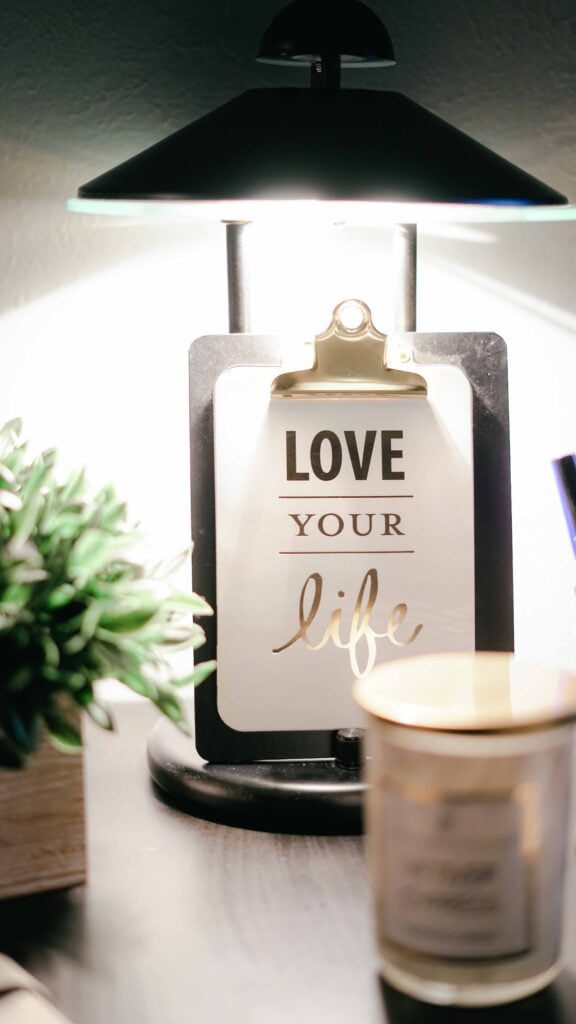Rebuilding Self-Confidence After a Breakup: Steps to Rediscover Your Worth

Going through a breakup can be one of the most challenging experiences in life. Whether the split was amicable or filled with conflict, the aftermath often leaves us feeling shattered and questioning our self-worth. It’s natural to experience a dip in self-confidence during this time, but it’s essential to remember that this is just a phase – one that you can overcome with patience, self-compassion, and dedication to your personal growth journey. Understanding the Impact of a Breakup on Self-Confidence The end of a relationship can leave us feeling emotionally drained and insecure. We may find ourselves replaying past conversations and actions, searching for clues as to what went wrong or blaming ourselves for the outcome. These negative thought patterns can take a toll on our self-esteem, making it difficult to move forward with confidence. It’s crucial to recognize that our self-worth is not determined by the success or failure of a relationship. Instead, it stems from within – from our inherent value as individuals. While a breakup may shake our sense of self temporarily, it does not define who we are or diminish our worthiness of love and happiness. Steps to Rebuild Self-Confidence 1. Practice Self-Compassion: In the aftermath of a breakup, it’s easy to be hard on yourself. Instead of berating yourself for perceived mistakes or shortcomings, practice self-compassion. Treat yourself with the same kindness and understanding that you would offer to a friend in a similar situation. Remember that it’s okay to feel sad, angry, or lost – these emotions are part of the healing process. 2. Seek Support: Reach out to friends, family members, or a therapist who can offer support and perspective during this challenging time. Talking about your feelings with someone you trust can help you gain clarity and validation. Additionally, consider seeking professional guidance from a life coach or therapist who specializes in relationship issues and emotional healing. Mindset coaching can be particularly beneficial for reframing negative thought patterns and fostering a positive outlook on life. 3. Heal Emotional Trauma: Breakups often unearth deep-seated emotional wounds that require healing. Emotional trauma from past experiences can resurface, intensifying the pain of the breakup. Working with a practitioner who specializes in emotional trauma healing techniques such as Reiki, EFT (Emotional Freedom Technique), or soul retrieval can facilitate the release of trapped emotions and promote emotional healing. 4. Nurture Your Spirit: Reconnect with activities and practices that nourish your spirit and bring you joy. Whether it’s spending time in nature, practicing meditation, or engaging in creative pursuits, prioritize activities that uplift and energize you. Cultivating a sense of inner peace and fulfillment will naturally boost your self-confidence and resilience. 5. Practice Self-Care: Take care of your physical, emotional, and mental well-being by prioritizing self-care practices. Make time for rest, exercise, nutritious meals, and activities that help you relax and recharge. Prioritize sleep and establish a bedtime routine that promotes restful sleep. Engage in activities that promote self-expression and self-discovery, such as journaling, art, or music. 6. Challenge Negative Beliefs: Identify and challenge any negative beliefs or self-limiting beliefs that may be holding you back. Replace them with positive affirmations that affirm your worth and potential. Positive affirmations can rewire your mindset and boost your self-confidence over time. 7. Set Boundaries: Establish healthy boundaries in your relationships to protect your emotional well-being. Recognize and honor your needs and preferences, and communicate them assertively to others. Surround yourself with people who uplift and support you, and distance yourself from those who drain your energy or undermine your self-esteem. 8. Focus on Personal Growth: View this period of transition as an opportunity for personal growth and self-discovery. Embrace new experiences, hobbies, and interests that expand your horizons and challenge you to step out of your comfort zone. Invest in your personal development by setting goals and taking actionable steps towards achieving them. 9. Forgive Yourself and Others: Release any lingering resentment or bitterness towards yourself or your ex-partner by practicing forgiveness. Forgiveness does not mean condoning hurtful behavior or forgetting past grievances. Instead, it’s about freeing yourself from the burden of resentment and reclaiming your power to choose peace and liberation. 10. Celebrate Your Progress: Acknowledge and celebrate your progress, no matter how small it may seem. Every step forward, no matter how insignificant it may appear, brings you closer to healing and growth. Reflect on your accomplishments and resilience, and recognize the strength and courage it takes to rebuild your self-confidence after a breakup. Conclusion Rebuilding self-confidence after a breakup is a gradual process that requires patience, self-compassion, and dedication. By practicing self-care, seeking support, and engaging in healing practices, you can rediscover your worth and emerge from this experience stronger and more resilient than ever before. Remember, you are deserving of love, happiness, and fulfillment – both within yourself and in your future relationships. If you’re struggling to rebuild your self-confidence after a breakup and would like personalized support and guidance, consider working with a life coach and energy healer. Daniel Rosenstein, the Ultimate Energy Coach, specializes in empowering individuals to overcome challenges, heal emotional wounds, and live authentically. Take the first step towards reclaiming your self-confidence and schedule a consultation today. Together, we can embark on a journey of self-discovery, healing, and transformation. Your worthiness is inherent – it’s time to embrace it fully and step into the life you deserve. Contact Daniel Rosenstein, Life Coach and Energy Healer here
Healing After a Breakup: Acknowledging Your Emotions

Breakups are never easy. Whether it’s an amicable parting or a painful separation, the end of a relationship can stir up a whirlwind of emotions. From sadness and anger to confusion and heartache, the emotional aftermath of a breakup can feel overwhelming. However, amidst the turmoil, there lies a crucial first step towards healing: acknowledging and processing your emotions. In this blog post, we’ll delve into why it’s essential to allow yourself to feel and validate your emotions after a breakup. We’ll explore the significance of this step in the healing process and provide actionable tips on healthy ways to cope with difficult emotions. The Importance of Acknowledging Emotions: When faced with the pain of a breakup, it can be tempting to bury our emotions deep within ourselves and put on a brave face. We may try to distract ourselves with work, socializing, or other activities in an attempt to numb the pain. However, suppressing our emotions only delays the healing process and can lead to long-term emotional consequences. Acknowledging our emotions is the first step towards healing because it allows us to confront our feelings head-on. By acknowledging our emotions, we validate our experiences and give ourselves permission to feel whatever it is we’re feeling. This validation is essential for our emotional well-being and sets the stage for healing to occur. Allowing Yourself to Feel: One of the most important aspects of acknowledging our emotions is allowing ourselves to feel them fully. This means giving ourselves permission to experience the entire spectrum of emotions that come with a breakup, whether it’s sadness, anger, guilt, or even relief. It’s natural to want to avoid painful emotions, but suppressing them only prolongs our suffering. Instead, we must lean into our emotions and allow ourselves to fully experience them without judgment or resistance. This process can be uncomfortable at times, but it’s a necessary part of the healing journey. Tips for Processing Emotions: Processing our emotions after a breakup is a deeply personal journey, and there’s no one-size-fits-all approach. However, there are several healthy coping strategies that can help facilitate the process: Navigating the emotional aftermath of a breakup can be challenging, but it’s an essential part of the healing journey. By acknowledging and processing your emotions, you take the first step towards healing and reclaiming your emotional well-being. If you’re struggling to cope with the emotions of a breakup and could use some guidance and support, consider hiring a life coach to help you navigate this difficult time. A life coach can provide personalized support and guidance tailored to your unique needs, helping you move forward with clarity, strength, and resilience. I, Daniel Rosenstein, a seasoned life coach and energy healer, specialize in helping individuals heal from the pain of breakups and reclaim their joy and vitality. With compassionate guidance and expertise, you can embark on a journey of healing and transformation, finding peace and fulfillment on the other side. Ready to navigate through your emotions and embark on a journey of healing? Consider hiring Daniel Rosenstein as your trusted guide and ally on the path to emotional well-being. Visit my services page here to learn more and take the first step towards healing today.
10 Products to Reduce Anxiety: Your Comprehensive Guide to Finding Calm

In today’s fast-paced world, it’s no surprise that many of us experience anxiety from time to time. Whether it’s due to work stress, relationship challenges, or simply the demands of everyday life, finding ways to manage anxiety is essential for our overall well-being. Fortunately, there are numerous products available that can help promote relaxation and reduce anxiety levels. In this comprehensive guide, we’ll explore ten of the top products designed to help you find calm amidst the chaos. 1. Weighted Blankets:Weighted blankets have gained popularity in recent years for their ability to provide a sense of comfort and security. These blankets are filled with evenly distributed weights, typically made of glass beads or plastic pellets, which apply gentle pressure to the body. The deep pressure stimulation created by weighted blankets has been shown to increase serotonin levels and promote relaxation. One popular option is the Gravity Blanket, which is available in various weights and sizes to suit individual preferences. You can find more information about Gravity Blankets here. 2. Aromatherapy Diffusers:Aromatherapy is a natural approach to reducing anxiety that involves using essential oils derived from plants to promote relaxation and improve mood. Aromatherapy diffusers are devices that release these essential oils into the air, allowing you to enjoy their therapeutic benefits. Popular essential oils for anxiety relief include lavender, chamomile, and bergamot. The URPOWER Essential Oil Diffuser is a top-rated choice among users, offering a sleek design and multiple misting modes. Learn more about the URPOWER Essential Oil Diffuser here. 3. Fidget Toys:Fidget toys are small, handheld devices designed to provide sensory stimulation and help individuals focus their attention. These toys can be particularly beneficial for reducing anxiety in situations where concentration is required, such as during work or school. Examples of fidget toys include stress balls, fidget spinners, and fidget cubes. The Zuru Fidget Cube is a popular option known for its variety of tactile features, including buttons, switches, and gears. Explore the Zuru Fidget Cube here. 4. Herbal Teas:Herbal teas have long been used for their calming properties and are an excellent natural remedy for anxiety. Certain herbs, such as chamomile, peppermint, and valerian root, have been shown to have relaxing effects on the body and mind. Drinking a warm cup of herbal tea can help soothe nerves and promote relaxation. Yogi Tea offers a wide range of herbal tea blends specifically formulated to reduce stress and anxiety. Discover Yogi Tea’s collection here. 5. Noise-Canceling Headphones:Noise-canceling headphones are a valuable tool for reducing anxiety in noisy environments. These headphones use advanced technology to block out external sounds, allowing you to create a peaceful oasis wherever you go. Whether you’re commuting on a noisy train or working in a bustling office, noise-canceling headphones can help you stay focused and calm. The Bose QuietComfort 35 II is a highly regarded option known for its superior noise-canceling capabilities and comfortable design. Learn more about the Bose QuietComfort 35 II here. 6. Journaling:Journaling is a powerful tool for managing anxiety and gaining insight into your thoughts and feelings. Taking the time to write down your worries, fears, and emotions can help you process them more effectively and gain a sense of clarity. Additionally, journaling allows you to track your progress over time and identify patterns or triggers that contribute to your anxiety. The Five Minute Journal is a popular choice among journaling enthusiasts, offering guided prompts and exercises to promote gratitude and mindfulness. Explore the Five Minute Journal here. 7. Mindfulness Apps:Mindfulness apps are a convenient way to incorporate relaxation techniques into your daily routine. These apps offer guided meditations, breathing exercises, and mindfulness practices designed to reduce stress and promote inner peace. Whether you’re new to mindfulness or an experienced practitioner, there’s an app out there to suit your needs. Calm is one of the most well-known mindfulness apps, offering a wide range of guided meditations and sleep stories to help you unwind and relax. Discover the Calm app here. 8. Light Therapy Lamps:Light therapy lamps, also known as SAD lamps, are used to treat seasonal affective disorder (SAD) by simulating natural sunlight. These lamps emit bright, white light that mimics the sun’s rays, which can help regulate your body’s internal clock and improve mood. Using a light therapy lamp for just a few minutes each day can have a significant impact on your overall well-being, especially during the dark winter months. The Verilux HappyLight Therapy Lamp is a top-rated option, featuring adjustable brightness settings and a sleek, compact design. Learn more about the Verilux HappyLight Therapy Lamp here. 9. CBD Products:CBD, or cannabidiol, is a compound derived from the cannabis plant that has gained popularity for its potential therapeutic benefits, including anxiety relief. CBD products come in various forms, such as oils, gummies, and capsules, and are widely available for purchase online and in stores. CBD works by interacting with the body’s endocannabinoid system, which plays a role in regulating mood, sleep, and stress responses. Premium Jane is a reputable CBD brand known for its high-quality products and transparent manufacturing practices. Explore Premium Jane’s range of CBD products here. 10. Exercise Equipment:Regular exercise is one of the most effective ways to reduce anxiety and improve overall mental health. Engaging in physical activity releases endorphins, which are chemicals in the brain that act as natural mood lifters. Exercise equipment such as yoga mats, resistance bands, and stationary bikes can help you incorporate movement into your daily routine. Whether you prefer yoga, weightlifting, or cardio workouts, there’s an exercise option out there to suit your preferences and fitness level. Manduka is a leading brand in the yoga industry, offering high-quality yoga mats and accessories designed to support your practice. Discover Manduka’s collection here. In conclusion, finding ways to reduce anxiety and promote relaxation is essential for maintaining our mental and emotional well-being. Whether you prefer holistic remedies like herbal teas and aromatherapy or high-tech gadgets like noise-canceling headphones and light therapy lamps, there’s a product out there to suit your needs.
20 Best Ways to Reduce Anxiety: Navigating the Path to Inner Peace

In our fast-paced lives, anxiety has become an unwelcome companion for many. The demands of daily life can take a toll on our mental well-being, leaving us yearning for effective ways to find inner peace. In this comprehensive guide, we’ll explore 20 powerful strategies to reduce anxiety, covering various aspects of physical, mental, and emotional well-being. 1. Deep Breathing Exercises: Begin your journey to calmness with simple deep breathing exercises. Learn techniques like diaphragmatic breathing and box breathing from reputable sources such as Harvard Health and incorporate them into your daily routine. 2. Mindfulness Meditation: Embrace the present moment through mindfulness meditation. Explore the benefits and techniques on Mindful.org to kickstart your mindfulness practice. 3. Regular Exercise: Physical activity is a natural stress reliever. Discover the positive impact of exercise on mental health at Mayo Clinic. 4. Balanced Nutrition: Fuel your body and mind with the right nutrients. Find guidance on maintaining a balanced diet at WebMD. 5. Adequate Sleep: Lack of sleep can exacerbate anxiety. Learn about the importance of quality sleep and tips for improving sleep hygiene on Sleep Foundation and apply them to your routine. 6. Journaling: Explore the therapeutic benefits of journaling for anxiety relief. Discover how to start a journaling practice on Psychology Today. 7. Limiting Caffeine and Sugar Intake: Be mindful of your dietary choices. Understand the impact of caffeine and sugar on anxiety levels at Healthline and make informed decisions. 8. Social Connection: Nurture meaningful connections with others. Explore the role of social support in anxiety reduction on HelpGuide. 9. Art and Creativity: Engage in creative pursuits as a form of self-expression. Discover the therapeutic benefits of art on Verywell Mind. 10. Establishing Boundaries: Set healthy boundaries to protect your well-being. Learn about boundary-setting techniques on Psych Central. 11. Progressive Muscle Relaxation: Release tension through progressive muscle relaxation. Find a step-by-step guide at Mind.org 12. Positive Affirmations: Cultivate a positive mindset through affirmations. Explore how positive affirmations can impact your mental well-being at Positive Psychology. 13. Aromatherapy: Harness the power of scents to promote relaxation. Discover the benefits of aromatherapy on Medical News Today and incorporate them into your daily routine. 14. Yoga and Tai Chi: Embrace the mind-body connection through gentle exercises like yoga and tai chi. Learn more on Yoga Journal and Mayo Clinic. 15. Laughter Therapy: Find joy in laughter to reduce anxiety. Discover the therapeutic effects of laughter on HelpGuide. 16. Nature Walks: Connect with nature to soothe your mind. Explore the benefits of spending time outdoors on National Geographic 17. Cognitive Behavioral Therapy (CBT): Explore the principles of CBT for anxiety management. Learn how CBT can be applied from the American Psychological Association 18. Energy Healing Techniques: Delve into energy healing modalities such as Pranic Healing and Reiki. Learn about these practices on our Pranic Healing page and Reiki page. 19. Mind-Body Connection: Understand the intricate relationship between the mind and body. Explore the concept of the mind-body connection at Psychology Today 20. Soul Retrieval: Discover the profound impact of soul retrieval on healing. Learn about this transformative practice on our Soul Retrieval page. Conclusion: Reducing anxiety is a holistic journey that involves addressing various aspects of your life. By incorporating the 20 strategies discussed in this guide, you can create a personalized approach to finding inner peace. Remember that everyone’s journey is unique, and it may take time to discover the combination of techniques that works best for you. If you’re looking for personalized guidance and support on your anxiety reduction journey, I invite you to explore the options available on my website, Ultimate Energy Coach. Whether you’re interested in a free consultation or a one-on-one coaching and energy healing session, I, Daniel Rosenstein, a life coach and energy healer with 15 years of experience, am here to assist you on your path to ultimate well-being. Take the first step towards a calmer, more balanced life. Book your session today and embark on a journey of self-discovery and transformation. Visit https://ultimateenergycoach.com/ to book your session and reclaim your inner peace.
A Comprehensive Guide on How to Find a Life Coach Near Me

find a life coach near you Embarking on a journey of self-discovery and personal growth often necessitates the support of a skilled guide—a life coach. In this detailed guide, we’ll explore the steps to find a life coach near you, the qualities to look for, and how to align your needs with the right coaching approach. Additionally, discover the unique offerings of Daniel Rosenstein, a seasoned life coach and energy healer with over 15 years of experience. down your neck? Knowing your enemy is half the battle. Section 1: Understanding the Role of a Life Coach 1. Defining Life Coaching: Understand the fundamental role of a life coach. Life coaches provide guidance, support, and accountability to help individuals set and achieve personal and professional goals. 2. Identifying Your Needs:Reflect on your goals and challenges. Are you seeking career guidance, motivation, or assistance in overcoming emotional trauma? Clarifying your needs will guide your search for the right life coach. Section 2: How to Find a Life Coach Near You 1. Online Directories:Explore online directories such as the International Coach Federation (ICF) or the Life Coach Directory to find certified coaches in your area.2. Personal Recommendations:Reach out to friends, family, or colleagues who have experienced coaching. Personal recommendations often provide valuable insights into a coach’s effectiveness.3. Social Media and Forums:Engage in social media groups or forums related to personal development. Members often share recommendations and experiences with local coaches.4. Local Community Centers and Events:Check community centers, local workshops, or networking events. Many coaches host sessions or workshops in community spaces. Section 3: Qualities to Look for in a Life Coach 1. Certification and Credentials:Ensure your prospective life coach holds relevant certifications and credentials. Look for affiliations with reputable coaching organizations.2. Compatibility:A strong coach-client relationship is built on trust and compatibility. Seek a coach whose approach resonates with your values and communication style.3. Specializations:Consider a coach’s specialization. Whether it’s motivational coaching, emotional trauma recovery, or energy healing, finding a coach aligned with your specific needs is essential. Section 4: Exploring the Offerings of Daniel Rosenstein Explore the unique services offered by Daniel Rosenstein: Motivational Coaching Emotional Trauma Recovery Soul Retrieval Pranic Healing Reiki Daniel Rosenstein integrates over 15 years of experience and a multitude of healing modalities to guide individuals toward holistic well-being. prioritize like a wise Jedi, not a desperate rebel. Section 5: Testimonials from Daniel’s Coaching Clients Testimonial 1 by Gene P: “Daniel Rosenstein is a true gem in the world of life coaching. His motivational coaching sessions were a game-changer for me. I not only clarified my goals but also found the strength within to pursue them. His personalized approach and genuine commitment to my growth have made all the difference.” Testimonial 2 by Christina S: “I can’t thank Daniel enough for his expertise in emotional trauma recovery. His empathetic coaching style created a safe space for me to confront and heal from past traumas. Working with him has been transformative, and I’m now equipped with tools to navigate life with resilience and joy.” Testimonial 3 by Jayme S: “Daniel’s energy healing sessions, including Pranic Healing and Reiki, have been nothing short of miraculous for me. His holistic approach addresses both the mind and body, leaving me with a profound sense of balance and well-being. I highly recommend his services to anyone seeking a compassionate guide on their journey to healing.” Section 6: Booking a Session with Daniel Rosenstein Ready to take the next step? Daniel Rosenstein offers the opportunity for a free consultation or a personalized 1-on-1 coaching and energy healing session.Book your session now by visiting Daniel’s website. Conclusion: Finding a life coach near you is a transformative step toward personal growth and fulfillment. As you navigate this journey, consider the unique offerings of Daniel Rosenstein, a compassionate guide with a wealth of experience. Book a session today and unlock the doors to a more empowered and fulfilling life.
Letting Go of Shame: A Comprehensive Guide to Healing and Self-Discovery

Let go of shame Shame, a powerful and often paralyzing emotion, can impede personal growth and hinder our overall well-being. However, the journey toward letting go of shame is transformative, leading to self-discovery, healing, and a renewed sense of empowerment. In this extensive blog post, we will explore various strategies and holistic approaches to help release shame, fostering a path toward a more fulfilling life. Understanding Shame Before we dive into the strategies for letting go of shame, it’s crucial to understand its roots and manifestations in our lives. Shame often stems from past experiences, societal expectations, or personal beliefs, affecting our self-esteem, relationships, and overall sense of self-worth. prioritize like a wise Jedi, not a desperate rebel. Acknowledging Shame and Its Impact The initial step in overcoming shame is acknowledging its presence in our lives. Many times, shame operates subtly, influencing our thoughts and behaviors without our awareness. By recognizing and accepting the existence of shame, we can begin the journey towards healing. Acknowledging Shame and Its Impact 1. Reiki Healing Ultimate Energy Coach – Reiki Reiki, an ancient Japanese healing technique, involves channeling universal life energy to promote balance and harmony within the body. It can effectively release emotional blockages, including shame, fostering inner peace and healing. 2. Soul Retrieval Ultimate Energy Coach – Soul RetrievalSoul retrieval, rooted in shamanic practices, focuses on reclaiming lost parts of the soul due to past traumas. By addressing the root causes of shame through soul retrieval, individuals can experience profound healing and regain a sense of wholeness. 3. Pranic Healing Ultimate Energy Coach – Pranic HealingPranic Healing is an energy healing system that addresses energetic imbalances and blockages within the body. Effective in releasing stored emotions, including shame, it restores the body’s natural energy flow. 4. Emotional Trauma Release Ultimate Energy Coach – Emotional TraumaAddressing and releasing emotional trauma is crucial in letting go of shame. Techniques such as energy clearing, guided meditation, and emotional release exercises can be powerful tools in breaking free from past traumas. 5. Motivational Coaching Ultimate Energy Coach – Motivational Coaching Motivational coaching empowers individuals to set and achieve personal goals. Working with a motivational coach provides support, guidance, and a structured approach to building self-esteem and confidence. Incorporating Mindfulness and Self-Compassion In addition to specific energy healing techniques, mindfulness and self-compassion play pivotal roles in the shame-release journey. Cultivating Self-Compassion Treating oneself with kindness and understanding is fundamental in countering shame’s harsh self-criticism. Developing self-compassion fosters a positive inner dialogue, promoting emotional healing.In addition to specific energy healing techniques, mindfulness and self-compassion play pivotal roles in the shame-release journey. Seeking Professional Support While self-help techniques are valuable, seeking professional support is essential, especially when dealing with deep-seated shame and trauma. Nurturing a Positive Self-Image Actively nurturing a positive self-image involves challenging negative self-talk and celebrating achievements, no matter how small. Building Healthy Boundaries Setting and maintaining healthy boundaries protect against situations triggering shame, fostering balance and fulfillment. Journaling for Self-Reflection Journaling provides a safe space for self-expression, allowing individuals to explore the origins of shame and track their healing progress. Continued Learning and Growth The journey to letting go of shame involves continuous learning and growth. Explore different healing modalities, read books, attend workshops, and participate in support groups. Connecting with Supportive Communities Feeling a sense of connection is crucial for healing. Seek out communities where individuals share similar experiences, providing invaluable support and understanding. Celebrating Milestones Take time to celebrate milestones and achievements on the journey. Acknowledging progress reinforces positive behavior and fosters a sense of accomplishment. Embracing Forgiveness Forgiving oneself and others is profound in releasing shame. It frees individuals from past grievances, opening the door to a more positive future. The Role of Mindfulness in Shame Release Mindfulness practices, such as meditation and mindful breathing, are integral in the journey of letting go of shame. These practices create awareness of the present moment, allowing individuals to observe their thoughts and emotions without judgment. Mindfulness encourages a non-reactive stance to inner experiences, providing a space for individuals to detach from shame-triggering thoughts. By cultivating mindfulness, individuals can develop a healthier relationship with their emotions and foster a sense of acceptance. The Power of Self-Compassion in Healing Self-compassion involves treating oneself with the same kindness and understanding as one would offer to a friend facing difficulties. Dr. Kristin Neff, a leading researcher in the field of self-compassion, outlines three key components of this practice: Self-Kindness: Being warm and understanding toward oneself in moments of pain or failure. Common Humanity: Recognizing that suffering is a shared human experience, fostering connection rather than isolation. Mindfulness: Approaching one’s thoughts and feelings with balanced awareness, neither suppressing nor exaggerating them. Cultivating self-compassion can be a transformative tool in releasing shame. It involves challenging the inner critic, embracing imperfections, and fostering a sense of empathy toward oneself. Seeking Professional Guidance for Complex Trauma While self-help practices and holistic approaches are valuable, seeking professional guidance is essential, particularly when dealing with complex trauma and deep-seated shame. Mental health professionals, including therapists and counselors, can provide a safe and supportive space for individuals to explore their experiences, uncover underlying issues, and work towards healing. Therapeutic modalities such as Cognitive Behavioral Therapy (CBT), Dialectical Behavior Therapy (DBT), and Eye Movement Desensitization and Reprocessing (EMDR) have shown effectiveness in addressing shame and trauma. A trained therapist can tailor these approaches to an individual’s specific needs, facilitating a structured and supportive healing process. The Healing Power of Connection Connecting with supportive communities can significantly impact the shame-release journey. Sharing experiences with others who understand and empathize fosters a sense of belonging and reduces the isolation often associated with shame. Online forums, support groups, or community organizations focused on mental health can provide valuable resources and a supportive network. Journaling: A Gateway to Self-Discovery Journaling serves as a powerful tool for self-reflection and self-discovery on the path to letting go of shame. Writing about personal experiences, thoughts, and emotions allows individuals to explore the origins of shame
Conquering the Chaos: 20 Battle-Tested Tips to Tame and Reduce the Overwhelm Beast

The to-do list seems to stretch to infinity, the emails multiply like rabbits on nitro, and your brain feels like a tangled mess of responsibilities and anxieties. Welcome to the club, friend. Overwhelm isn’t just a buzzword; it’s a modern-day monster that feasts on our time, energy, and sanity. But before you throw in the towel and declare yourself a victim, hold your horses! There are ways to fight back, reclaim your sanity, and emerge victorious from the battle with overwhelm. 1. Identify the Hydra’s Heads: Before you can slay the beast, you need to know its true form. What’s fueling your overwhelm? Is it a workload that would make Atlas blush, a personal life resembling a telenovela climax, or financial woes that rival Scrooge McDuck’s nightmares? Pinpointing the source(s) is crucial, as it allows you to focus your defenses strategically. Is it the hydra of work deadlines hissing in your ear, or the many-headed chimera of relationship drama breathing fire down your neck? Knowing your enemy is half the battle. 2. Declutter Your Digital Jungle: Just like a messy desk breeds mental chaos, a schedule crammed with unnecessary appointments and commitments is an open invitation for overwhelm. Take a machete to your digital jungle and hack away at the non-essentials. Can that meeting be an email? Can that task be delegated? Can that notification be silenced? Ruthlessly re-evaluate your commitments, prioritize ruthlessly, and remember, saying “no” to the less important is saying “yes” to sanity. 3. Prioritize Like a Jedi Master: Not all tasks are created equal. Learn to wield the lightsaber of prioritization, focusing on the urgent and important while letting go of the trivial and the time-wasting. The Eisenhower Matrix can be your Yoda in this quest. Classify your tasks by urgency and importance, and learn to delegate, postpone, or even eliminate those in the “not urgent, not important” quadrant. Remember, you’re not Luke Skywalker trying to blow up the Death Star; prioritize like a wise Jedi, not a desperate rebel. 4. Chunk the Wookiee-Sized Tasks: Feeling overwhelmed by a project that resembles a Wookiee’s breakfast? Don’t panic, young Padawan! Break that behemoth down into bite-sized chunks. Think of it like building a spaceship instead of staring at a pile of unassembled parts. Each completed chunk fuels motivation, gives you a sense of progress, and makes the finish line seem less like a distant planet and more like a reachable landing pad. 5. Channel Your Inner Gandalf: Remember Gandalf’s epic duel with the Balrog? Sometimes, to conquer overwhelm, you need to stand your ground and say “You shall not pass!” Learn to set healthy boundaries, even with the most persistent demands and requests. Saying “no” to unreasonable expectations isn’t about being selfish; it’s about protecting your time, energy, and mental well-being. You are not Gandalf’s staff, bending to every breeze; you are the mighty wizard yourself, wielding the power of boundaries with confidence. 6. Tame the Technology Tyranny: Technology, the double-edged lightsaber of our age, can be a productivity booster or a major source of distraction. Minimize notifications, schedule tech breaks like meditation sessions, and consider a digital detox once in a while. Think of it like taking a vacation to Rivendell to recharge your mental batteries. Remember, the Force (of productivity) flows more freely when you’re not constantly bombarded by the dark side of digital distractions. 7. Buffer the Blast from the Past: Remember Princess Leia’s desperate plea for a “hyperspace jump to avoid the Imperial Starfleet”? Sometimes, even the bravest heroes need a buffer zone. Schedule mini-breaks between tasks and appointments. These buffers, like Leia’s hyperdrive, allow you to catch your breath, refocus, and avoid feeling like you’re constantly sprinting from one TIE fighter attack to the next. 8. Sleep Like a Wookiee in a Coma: Skimping on sleep is like trying to fight the Death Star with a rusty spoon. Aim for 7-8 hours of quality shut-eye each night. A well-rested mind is a clear and resilient mind, ready to face the overwhelm monsters with the strength of a well-slept Chewbacca. 9. Move Your Body, Feel the Force: Exercise, the secret weapon of Jedi and non-Jedi alike, is a natural stress reliever and mood booster. Even a brisk walk or some yoga poses can do wonders for your mental and emotional well-being. Think of it like channeling the energy of Yoda’s lightsaber training into your muscles. Movement releases endorphins, those feel-good chemicals that can chase away the darkness of overwhelm and brighten your day like a lightsaber illuminating a cave. 10. Fuel Your Battleship with Wisdom: What you eat impacts your energy levels and overall resilience. Just like the Millennium Falcon needs the right fuel to navigate the galaxy, your body needs healthy, energizing foods to handle the challenges of everyday life. Ditch the sugary treats and processed junk, and nourish your body with the wisdom of balanced meals and nutritious snacks. Think of it like stocking your inner pantry with the wisdom of Yoda, ensuring you have the right supplies to face any overwhelm storm. 11. Hydrate Like a Tatooine Farmer: Dehydration can zap your energy and fuel the fires of stress. Keep a reusable water bottle handy, your trusty droid of hydration, and sip throughout the day to stay cool and collected. Remember, even Luke Skywalker needed to sip blue milk in the Tatooine heat to stay sharp. 12. Breathe Easy, Find Your Serenity: Deep breathing exercises, the Jedi mind trick of stress management, can work magic on a racing mind and a tense body. Take slow, mindful breaths, like Luke finding his inner calm in the Dagobah swamp. With each inhale, release the anxieties, and with each exhale, welcome peace and clarity. Breathe like Yoda meditating on a mossy log, and watch your overwhelm melt away like the Hoth snow under a Tatooine sun. 13. Seek Support, You’re Not a Lone Wolf: Even the bravest heroes need their Rebel Alliance. Don’t be afraid to reach out to friends, family, or a therapist for support and guidance. Sharing your struggles
How to Heal a Broken Heart and Rediscover Self-Love this Valentine’s Day

Valentine’s day Valentine’s Day often brings feelings of love, romance, and connection. However, for many, it can also amplify feelings of loneliness, heartbreak, and confusion, especially if you’re navigating a broken heart or past relationships. But fear not, because this Valentine’s Day, I’m here to guide you through the process of healing, rediscovering self-love, and feeling good about yourself, regardless of your relationship status. Healing a Broken Heart: Healing from a broken heart takes time, patience, and self-compassion. Begin by acknowledging your feelings and allowing yourself to grieve the loss of the relationship. Remember that it’s okay to feel sad, angry, or confused. Practice self-care activities that nourish your mind, body, and soul, such as meditation, journaling, spending time in nature, or engaging in hobbies you enjoy.Additionally, consider seeking support from friends, family, or a professional therapist who can provide guidance and encouragement as you navigate this challenging time.Healing Past Relationships : Healing from past relationships involves releasing emotional attachments and finding closure. Reflect on the lessons you’ve learned from the relationship and focus on forgiving yourself and others for any pain or hurt experienced. Consider practicing forgiveness rituals or energy healing techniques, such as Reiki, Pranic healing, or soul retrieval, to release lingering emotional wounds and restore inner peace. By letting go of the past with love and compassion, you can create space for new experiences and relationships to enter your life.Rediscovering Self-Love : Valentine’s Day is the perfect opportunity to prioritize self-love and care. Treat yourself with kindness and compassion, celebrating your worthiness and inherent value as a unique individual. Practice positive affirmations, self-compassion exercises, or self-love rituals that honor your mind, body, and spirit. Engage in activities that bring you joy, fulfillment, and a sense of purpose, allowing yourself to fully embrace your authentic self and live life on your own terms.Feeling Good About Yourself : Feeling good about yourself begins with embracing your strengths, quirks, and imperfections. Focus on cultivating self-confidence, self-acceptance, and self-esteem by acknowledging your accomplishments, setting boundaries, and honoring your needs and desires. Surround yourself with positivity and inspiration, whether through uplifting music, inspirational books, or supportive communities. Remember that your worth is not defined by your relationship status or external validation, but by the love and respect you have for yourself.Tips for Dealing with Confusion in Relationships : When you feel confused about a past or current relationship, it’s important to take a step back and assess your feelings and needs. Here are some tips to help you navigate confusion in relationships: Give Yourself Space : Take time to reflect on your feelings and emotions without judgment. Allow yourself to feel and process your emotions, whether it’s sadness, anger, or confusion. Seek Clarity : If you’re feeling confused about a current relationship, consider having an open and honest conversation with your partner. Ask questions, express your concerns, and seek clarity on any issues or uncertainties. Set Boundaries : Establish healthy boundaries in your relationships to protect your emotional well-being. Communicate your needs, expectations, and limits with your partner, and be willing to enforce those boundaries if necessary. Trust Your Intuition : Listen to your gut instincts and inner wisdom. If something doesn’t feel right or if you’re unsure about a relationship, trust your intuition and take the necessary steps to address your concerns. Seek Support : Don’t hesitate to seek support from friends, family, or a professional therapist if you’re feeling confused or overwhelmed. Talking to someone you trust can provide clarity and perspective on your situation. Focus on Self-Care: Prioritize self-care activities that nurture your mind, body, and spirit. Engage in activities that bring you joy, relaxation, and a sense of well-being, helping you navigate confusion with a clear and grounded mind. Conclusion : This Valentine’s Day, remember that love begins within you. By embracing self-love, healing past wounds, and prioritizing your well-being, you can cultivate a deep sense of love, peace, and happiness that radiates from within. If you’re ready to embark on a journey of healing and self-discovery, I’m here to support you every step of the way. Take the first step towards healing and self-discovery by scheduling a consultation with me, Daniel Rosenstein, your trusted life coach and energy healer. Together, we can transform your pain into power, your wounds into wisdom, and your heartbreak into healing. Click here to book your free consultation. Internal Links For You To Explore: Explore My Services Learn About Reiki Healing Discover Soul Retrieval Heal Emotional Trauma
The Power of Gratitude: A Comprehensive Guide to Cultivating Thankfulness in Your Life

In a world that often seems chaotic and overwhelming, cultivating gratitude can be a powerful tool for finding peace and contentment. Gratitude is the practice of recognizing and appreciating the good things in our lives, no matter how small. It’s a mindset that can lead to greater happiness, improved relationships, and increased resilience in the face of challenges. In this comprehensive guide, we’ll explore what gratitude is, its history, famous gratitude quotes, how to practice gratitude effectively, common mistakes to avoid, and provide examples of gratitude exercises that you can use to cultivate a more thankful mindset. We’ll also discuss the best way to create a gratitude statement that resonates with you. What is Gratitude? Gratitude is a complex emotion that involves acknowledging the positive aspects of our lives and feeling thankful for them. It’s more than just saying “thank you” – it’s a mindset that can transform the way we think and feel about the world around us. Famous Gratitude Quotes: “Gratitude is not only the greatest of virtues, but the parent of all others.” – Cicer “Gratitude turns what we have into enough.” – Melody Beattie “Gratitude is the fairest blossom which springs from the soul.” – Henry Ward Beecher “Gratitude is the healthiest of all human emotions. The more you express gratitude for what you have, the more likely you will have even more to express gratitude for.” – Zig Ziglar How to Practice Gratitude: There are many ways to practice gratitude, and what works for one person may not work for another. However, some common practices include: Keeping a gratitude journal: Write down three things you’re grateful for each day. Saying thank you: Express gratitude to the people in your life who make a difference. Practicing mindfulness: Be present in the moment and appreciate the small things that bring you joy. Volunteering: Giving back to others can help you gain perspective and appreciate what you have. Practicing self-compassion: Be kind to yourself and acknowledge your own strengths and accomplishments. The Right and Wrong Way to Practice Gratitude: There is no right or wrong way to practice gratitude, but there are some common mistakes to avoid. For example, it’s important to be genuine in your gratitude – don’t just go through the motions. It’s also important to focus on the present moment, rather than dwelling on the past or worrying about the future. Examples of Gratitude Exercises: Write a thank-you note to someone who has made a difference in your life. Keep a gratitude jar: Write down things you’re grateful for on slips of paper and put them in a jar. Review them at the end of the year. Practice the “three good things” exercise: At the end of each day, write down three good things that happened and why they made you feel grateful. Practice the “stop, look, and go” exercise: When you’re feeling stressed or overwhelmed, take a moment to stop what you’re doing, look around, and find something to be grateful for. Then, go back to what you were doing with a renewed sense of gratitude. Creating a Gratitude Statement: A gratitude statement is a powerful way to focus your thoughts and intentions on what you’re thankful for. To create a gratitude statement, start by thinking about the things you’re grateful for in your life. Then, write a statement that reflects these things and resonates with you. For example, you might say, “I am grateful for the love and support of my friends and family, and for the opportunities I have to grow and learn.” Gratitude is a powerful tool that can help us attract what we want in life. When we focus on what we’re grateful for, we align our thoughts and emotions with what we want to manifest. This is because gratitude helps us cultivate a positive mindset, which can lead to greater confidence, resilience, and a sense of abundance. When we practice gratitude, we train our brains to look for the positive aspects of our lives. This can help us feel happier and more satisfied with what we have. Gratitude also helps us develop a more positive outlook, which can lead to increased resilience and a greater ability to cope with challenges. In addition to its impact on our mental and emotional well-being, gratitude can also help us attract more of what we want into our lives. When we focus on what we’re grateful for, we attract more of those things into our lives. This is because gratitude helps us align our thoughts and emotions with what we want to manifest. For example, if you’re grateful for the love and support of your friends and family, you’re more likely to attract more loving and supportive relationships into your life. Similarly, if you’re grateful for your job and the opportunities it provides, you’re more likely to attract more opportunities for growth and success. Overall, gratitude is a powerful tool that can help us live happier, more fulfilling lives. By practicing gratitude regularly, we can cultivate a greater sense of abundance and attract more of what we want into our lives. Conclusion: Gratitude is a powerful tool that can help us find peace and contentment in a chaotic world. By practicing gratitude regularly, we can cultivate a more thankful mindset and attract more of what we want into our lives. Whether it’s keeping a gratitude journal, saying thank you, or practicing mindfulness, there are many ways to incorporate gratitude into your daily life. So, what are you grateful for today? If you are interested in taking your life to the next level, consider life coaching and energy healing. Take the first step towards healing and self-discovery by scheduling a consultation with me, Daniel Rosenstein, your trusted life coach and energy healer with over 15 years of experience and worked with hundreds of people. Together, we can transform your pain into power, your wounds into wisdom, and your heartbreak into healing. Click here to book your free consultation.
